Dragon SpX-8 Cargo Overview
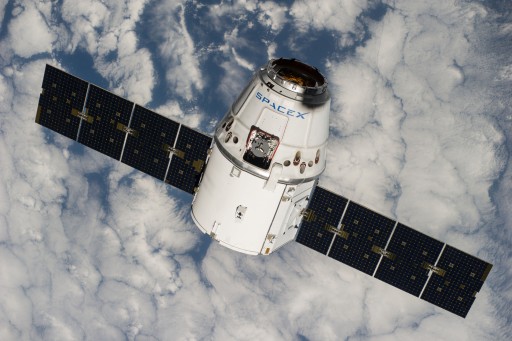
The Dragon SpX-8 mission is the eighth operational cargo mission conducted by the SpaceX Dragon to deliver supplies to the International Space Station and return experiments to the ground for post-flight analysis. SpX-8 marks the return to flight of the Dragon spacecraft following the June 2015 Falcon 9 launch failure that claimed the loss of the Dragon SpX-7 spacecraft when the rocket’s upper stage suffered a structural failure within its Helium pressurization system, leading to an overpressurization and loss of structural integrity.
Dragon SpX-8 is the first Dragon mission launching on the Falcon 9 Full Thrust Version, sporting up-rated engines, super-chilled propellants and stretched tanks to boost the rocket’s performance by 30% over its predecessor. Given this high performance, Falcon 9 can return its first stage for a landing at Cape Canaveral for low-energy missions in SpaceX’s continued efforts of making the large booster reusable.
Dragon remains the only visiting vehicle of ISS that can return a significant mass of cargo to the ground, aside from the crewed Soyuz spacecraft that can ferry a few dozen Kilograms of return items back to Earth along with its three crew members. The SpX-8 mission will carry 3,136 Kilograms of cargo to the Space Station and return to Earth with over one metric ton of cargo at the conclusion of its four-week mission.
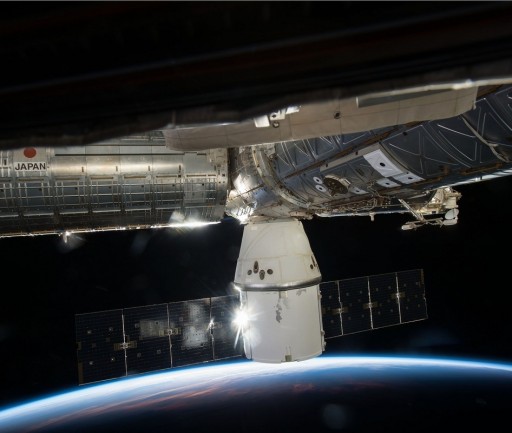
The Dragon SpX-8 cargo manifest is similar to that of previous missions comprised of scientific experiment materials, maintenance hardware for the various systems of ISS and supplies for the crew and the every-day life aboard the orbiting outpost. Dragon SpX-8 is carrying to ISS 640 Kilograms of science investigations, supporting dozens of the 250 experiments currently in progress aboard the Station, 547 Kilograms of crew supplies such as food and hygiene items, 306kg of systems hardware including maintenance equipment and replaceable parts, 12kg of spacewalk equipment, 108kg of computer resources and cameras, and 33 Kilograms of Russian Hardware.
Riding to ISS in the Trunk Section of the Dragon spacecraft is BEAM – the Bigelow Expandable Activity Module, accounting for 1,413 Kilograms of external cargo delivered to ISS. BEAM is looking forward to a two-year tenure as part of a test of an expandable space habitat in the actual mission environment over a longer time scale. Outfitted with sensors, BEAM will remain mostly uninhabited by the crew, except for three or four ingresses per year to allow the crew to conduct internal surveys and collect sensor data.
>>Detailed Overview of the Bigelow Expandable Activity Module & future plans
A number of Dragon’s payloads are described in detail on this page.
VEGGIE – Veg-03 (SpX-7 Re-Flight)
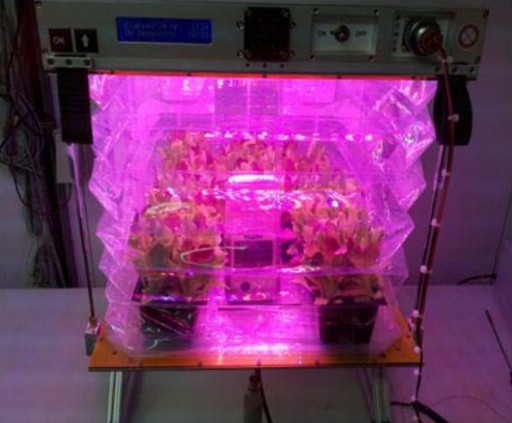
Veg-03 marks the third operational deployment of the VEGGIE Plant Growth Unit that was first used in the first half of 2014 to grow red romaine lettuce plants as part of a proof of concept of the Plant Growth Unit including two different sizes of arcillite, a calcined clay media in which the plants were grown.
Veg-01 provided valuable data in the form of returned water samples and root pads, imagery acquired in orbit of the growth process, and plant samples that were brought back to Earth. This data helped investigators assess the two different growth media with respect to water and root distribution within the different sized particles to chose media for future Veggie missions.
Furthermore, samples returned to Earth provided information on the microbial load of the plants to assess their safety for potential crew consumption and photographs taken over the course of the experiment allowed scientists to asses growth rate and plant health.
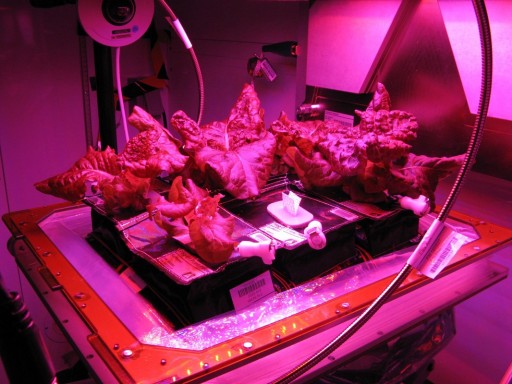
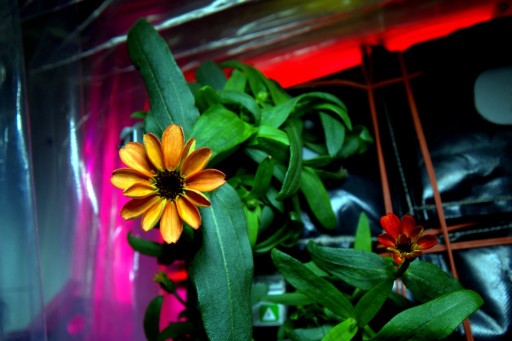
Additionally, two data loggers kept track of temperature and humidity within the Plant Growth Unit and questionnaires were performed by the crew to gather information on possible improvements of Veggie experiment procedures.
Although the overall Veg-01 experiment was a success, a number of deficiencies with regard to the plant pillows and the water delivery systems were identified leading to modifications made to the pillows and watering procedures that will be tested by Veg-03, also introducing a different crop with different water requirements.
Ground testing of the Plant Growth Facility showed a very low microbial contamination of plants that were grown within it and the Veg-01 experiment samples also showed a low microbe level with no specific pathogens being detected by ground-based testing. Assessments were conducted by microbiologists, flight surgeons and space food technicians who concurred that the crew should be able to consume the fresh produce with precautionary sanitizing using on-orbit Prosan wipes.
In 2015, the Space Station crew got their first taste of home-grown lettuce harvested from the Veggie Plant Growth Unit. Another 2015 study provided the crew with a touch of color when the first flowers grown on ISS were harvested by Astronaut Scott Kelly who also provided valuable insights into changes of experimental and operational protocols necessary for future Veggie experiment runs.
The overall aim of the Veg-03 study is to deliver more data on the performance of the Plant Growth Unit and the planting pillows. Veg-03 will use Tokyo Bekana cabbage as a test crop, also using two different sizes of clay media to again compare root distribution.
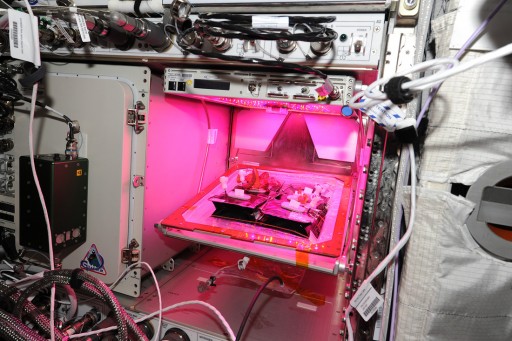
The Veggie experiment facility provides lighting and nutrient supply and is capable of supporting a variety of plant species that can be cultivated for educational outreach, fresh food and even recreation for crewmembers on long-duration missions. Thermal control is provided from ISS in-cabin systems and the carbon dioxide source is the ambient air aboard ISS.
Plants grown in the Veg-03 facility will be observed to determine how plants sense gravity and how they respond to microgravity. Serving as a pathfinder, the plants grown as part of VEGGIE will be harvested and studied before being cleared for consumption by crew members in orbit. The VEGGIE facility is the largest volume available aboard ISS for plant growth, which will allow the study of larger plants that could not be grown in previous experiments.
Veggie uses a plant growth chamber using planting pillows and an LED bank to provide lighting. Ground testing of the pillow planting concept led to the selection of growth media and fertilizers, plant species, materials, and protocols. The facility weighs 7.2 Kilograms and measures 53 by 40 centimeters and permits a maximum growth height of 45 centimeters. The root mat has a growing area of 0.16m² with a 2-liter fluid reservoir.
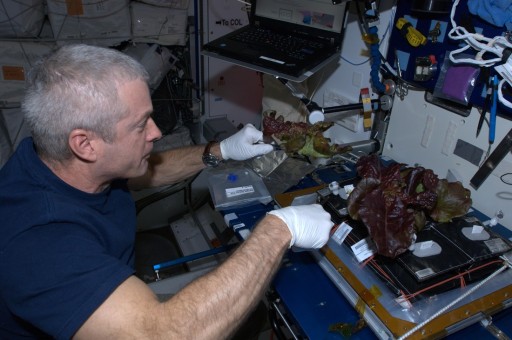
The system draws 115W of peak power and its LED banks can support adjustable wavelengths, light levels and day and night cycles to match the biological needs of the plants. A transparent teflon cover allows viewing of the plants. The plants will be photographed regularly to assess plant growth rates and health. Tissue samples will provide information on possible growth anomalies when being compared to ground controls. Environmental data will be provided by a data logger that measures temperature, humidity and pCO2.
The first studies performed with VEGGIE will also provide microbial samples of the plants and pillows to assess the level of microbial contamination and implement corrective measures if needed. For most species, microbial contamination levels will be well within limits and pose no threat to the crew. Other species that naturally have higher levels of microorganisms may need a sanitation method which must be developed and tested as part of the experiment. Growing plants in space provides crewmembers with fresh foods to supplement their diets, as well as a positive effect on morale and well-being.
Rodent Research 3
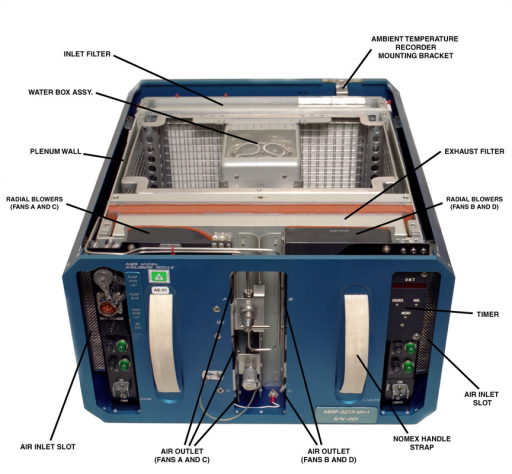
Rodent Research 3 is the second operational deployment of the Rodent Habitat to the International Space Station after a successful proof of concept on SpX-4 when 20 mice were flown to ISS to validate the design of the Rodent Transporter, the Rodent Habitat, transfer systems, bone densitometer and experimental procedures – paving the way for operational rodent missions to ISS with a duration up to three months. The first operational use of the new Rodent Facilities came on the SpX-6 mission when two studies were completed looking at antibody response in space and space-induced rise in intracranial pressure.
The Research is conducted using the Rodent Habitat Hardware that is described in detail here.
Rodent Research 3, named after the sponsoring company Eli Lilly and Co., will conduct a close study of myostatin inhibition for the prevention of sekeletal muscle atrophy and weakness in mice during long-duration spaceflight. A rapid loss of bone and muscle mass is observed in astronauts during spaceflight, especially to the legs and spine at rates similar to atrophy in people with muscle-wasting deseases on Earth. The study makes use of mice as a model organism to examine the response to certain drugs preventing muscle or bone loss.
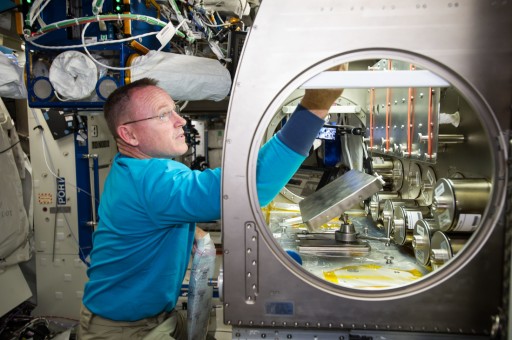
The Rodent Research 3 experiment also studies other organ systems aside from the musculoskeletal system to look for molecular and morphological changes as a function of spaceflight duration.
Is is known that mice suffer from rapid loss of muscle and bone mass after as little as 12 days of space flight exposure, the most affected bones and muscles are in the hind limbs and spine – similar to effects seen in human astronauts.
Groups of mice will be transferred from the Rodent Habitat to the Microgravity Science Glovebox at different intervals in the mission to be euthanized and dissected. Euthanasia is achieved through injection of ketamine/xylazine followed by exsanguination by cardiac puncture. The samples from the mice are stored at –80°C inside MELFI for eventual return to Earth for lab analysis to compare the results obtained in space with those of ground control samples.
Microchannel Diffusion
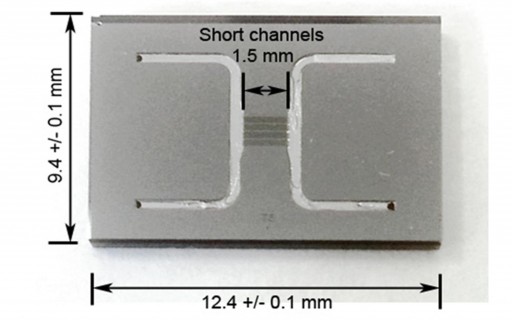
Microchannel Diffusion is a nanoscience and nanotechnology investigation looking at fluid dynamics at the nanoscale to learn how fluids and microparticles interact with surfaces of microchannels at this small scale, going down to the atomic level. This type of technology could find application in a number of areas such as nanofluidic sensors, drug delivery to specific places in an organism and many other applications in medicine, biology and technology.
The laws that control the flow through nanoscale channels are not yet fully understood and experimental data for the generation of fluid dynamic models is needed. ISS provides a unique environment for the study of nanoscale dynamics decoupled from the influence of gravity.
The Microchannel Diffusion Experiment studies fluid dynamics at a larger scale, the microscopic level, possible because samples in microgravity behave identical in both scale sizes.
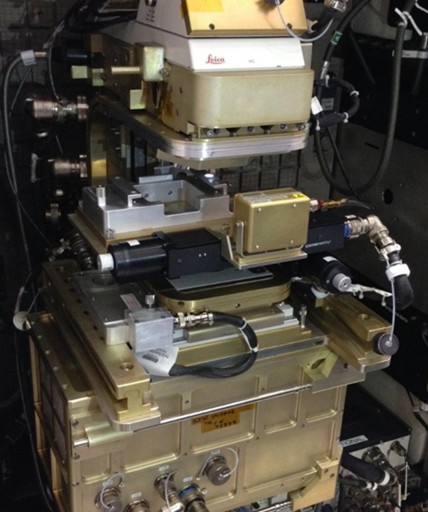
The primary objective of this study is to provide insight into the mechanisms of particle interactions with the surface of confining microchannels in the absence of gravity, looking at physical and electrostatic confinement. Insight into nanoscopic diffusive transport is relevant for on-Earth applications and microparticle diffusive transport may also be used in future space exploration systems.
The experiment employs the Light Microscopy Module (LMM) for microscopic analysis of the movement of fluorescent microparticles in a microfabricated microchannel chip. Four Microchannel Diffusion plates, each with 12 samples, are part of the experiment and each is to be imaged using the LMM for up to ten days.
For the experiment run, the Microchannel Plates are thawed after being retrieved from cold stowage and data loggers are installed on each plate to record the ambient environment. The Plates are then installed on a Microchannel Diffusion Plate Holder within the LMM and imaging is initiated via remote commanding. Imagery is retrieved and downlinked daily and the plates are returned to Earth via ambient stowage.
Protein Crystal Growth 4
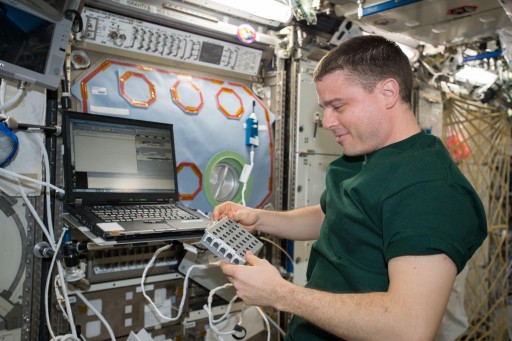
The Protein Crystal Growth-4 experiment continues to exploit the novel environment aboard ISS for the study of protein crystallization in the absence of gravity to understand the mechanisms of protein crystal growth in order to improve pharmaceutical products on Earth.
The human body generates a wide range of cells and proteins, including monoclonal antibodies to fight multiple diseases and pathogens. The crystallization of these proteins allows pharmaceutical researchers to get insight into properties and mechanisms of protein growth using antibodies that are currently undergoing clinical trials in the treatment of several diseases.
PCG-4 involves a pair of studies leveraging the unique microgravity environment offered by ISS for structure-based drug design (SBDD), using protein crystallography to inform the design of more effective and selective drugs. Growing Protein crystals in space yields larger, more uniform and pristine crystals than those grown on Earth due to the absence of a number of issues such as sedimentation and shear forces, preventing the growth of large molecules.
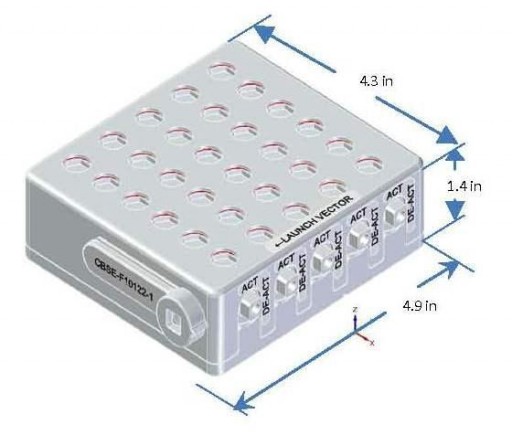
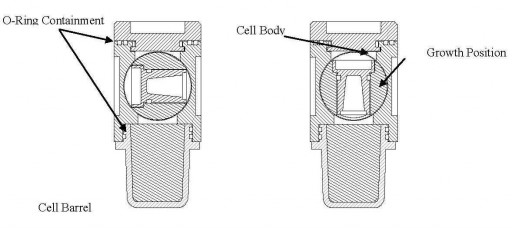
The use of protein crystallography requires high-resolution diffraction-quality crystals of a protein in order to be able to model the three dimensional structure of the molecules. Many protein molecules synthesized on Earth fall short of that requirement, allowing only partial structural information to be extracted. For targets in which high-resolution crystal structures are needed, production of crystals in the space environment may be a solution.
The first PCG-4 investigation studies the effects of the microgravity environment on the co-crystallization of a membrane protein with a medically relevant compound to be able to examine its three dimensional structure. Information on the structure of a protein will allow scientists to chemically target and inhibit reactive centers and prevent an intermediate step in substrate turnover to attack the protein’s mechanism of action.
The second study, going by the full name A Co-Crystallization in Microgravity Approach to Structure-based Drug Design, is focused on a comparison of the structure seen in space-grown crystals and that of crystals generated on Earth. It is expected that crystallography performed on space-grown crystals yields a higher resolution than for those developed on Earth. Resolving the structure of proteins in greater detail will lead to improvements in structure-based drug design.
PCG-4 is launched at -80°C to prevent crystals from forming while still en-route to the Space Station. Activation is completed in orbit by the crew within six days of launch by turning the sample cells clockwise by 90° which allows the sample to enter the precipitant reservoir. The experiment containers are then kept inside MERLIN at +4°C for a period of 21-30 days of crystal growth before deactivation and stowage in Dragon, again using Double Cold Bags for the sample vials that will be part of the expedited return cargo to undergo X-Ray crystallography once back on the ground.
Microbial Observatory 1
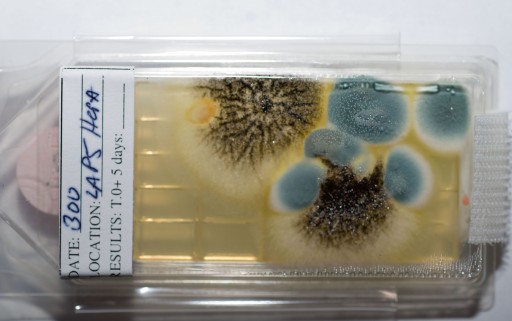
The MO-1 study will acquire air and surface samples from various locations of the International Space Station to observe which bacteria are present. This collection will last for one year to allow scientists to look at the types of microbes that can survive in the space environment and study their changes over time. This data is valuable for the assessment of risks to crew health and it also allows a close look at the way microbes adept in space as compared to mechanisms known from Earth-based studies.
Experiment data from MO-1 will go down to the cellular level to identify reactions that may be occurring in space but not on Earth which can provide helpful information for the development of antibiotics and antimicrobial agents. The experiment also serves as validation for omics technology in the screening for microbes and identification of those that may be present.
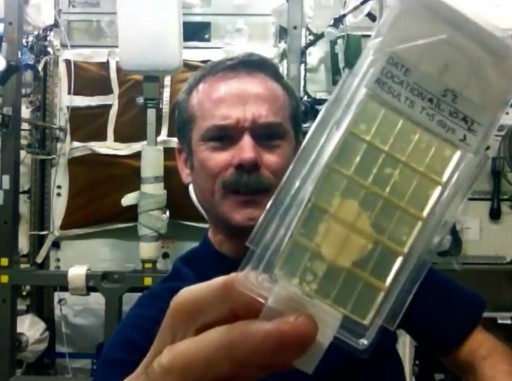
MO-1 aims to better understand risks to crew health in a closed environment for infection and illness, assess risk to fouling of clean air supplies and contamination of fluids and food, compare the microbial communities on ISS and on Earth in normal and extreme environments, identifying specific microbes that flourish in the space environment and conduct a study of the adaptation of microbes to the space environment. The primary goal of the study is to complete a detailed microbial census of ISS, delivering a complete database including the genomic sequence and genetic information for all microbes (bacteria and fungi) encountered within the ISS habitat.
The experiment uses air and surface samples collected from the various ISS modules, stored at room temperature and returned to Earth within two weeks of acquisition. Sample methods of MO-1 include adhesive tapes, swabs, contact slides, wipes, gelatin air filters and used gloves. Eight specific locations for surface sampling and six air sampling points have been selected – the zero-G stowage rack (ZSR) surface and dining table inside Unity (Node 1); crew quarters (CQ3) interior port wall inside Harmony (Node 2); overhead hatch area of cupola, rack next to waste and hygiene compartment (WHC), and foot platform of the advance resistive exercise device (ARED) inside Tranquility (Node 3); the ZSR surface inside Leonardo PMM; and the rack front near portable water dispenser (PWD) inside Destiny (Laboratory).
Micro-10
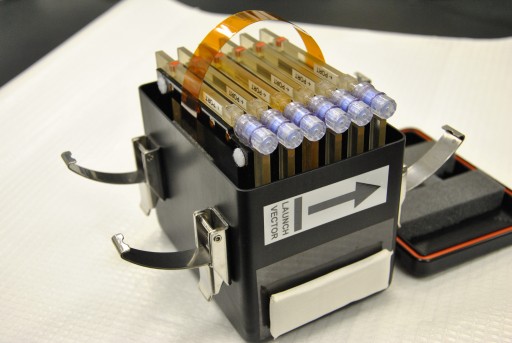
The full name of the Micro 10 Study is as follows: Influence of microgravity on the production of Aspergillus secondary metabolites (IMPAS) – a novel drug discovery approach with potential benefits to astronauts’ health.
Micro-10 examines how the stress represented by microgravity triggers changes in a model species – Aspergillus nidulans (A. nidulans), an important species used in many areas of research. Investigated by this study are changes in growth, gene expression, physical responses, and metabolism. Information on changes undergone by fungi in the space environment may provide insights relevant to the assessment of different fungal species for the generation of molecular compounds for drug development.
A nidulans spores (1 x 107) are spotted on east agar glucose growth media in Omnitray plates three days before launch with six plates placed in a Plate Habitat providing temperature control to the specimens. Once at ISS, the samples are incubated in the new Space Automated Bioproduct Laboratory (SABL) recently installed on the Station.
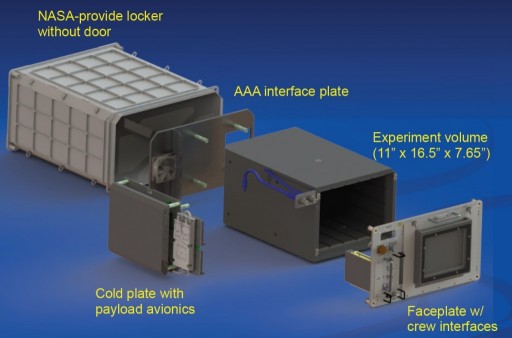
Two separate SABLs each with 4 PHABs are used to be able to establish a time course for the experiment with incubation times at +37°C of 4, and 7 days. Samples are terminated by cooling them to 4°C once the desired time point is reached as fungal cells remain dormant at this temperature. Separate ground controls are produced concurrently with the experiment run in space.
Secondary metabolites produced by fungi can be exploited for a variety of purposes with a primary focus on pharmaceuticals. Since the production of these substances is stimulated by environmental triggers, an investigation into the capability of secondary metabolite generation in the space environment is warranted. Micro-10 will examine whether fungal metabolite pathways that are inactive on Earth are activated in space as a result of the unique stress generated by microgravity leading to changes in gene expression, protein production, and overall physiological characteristics.
Micro-10 flies to ISS a very well understood model organism along with a wildtype strain and three different mutant strains, each targeting different pathways that may be triggered by microgravity.
Genes in Space-1
Genes in Space is a student-developed experiment to test whether the polymerase chain reaction (PCR) can be used to study DNA alterations aboard a spacecraft.
Spaceflight is known to cause alterations to human DNA and lead to weakened immune responses in astronauts. Understanding whether DNA changes and immune system degradation are linked is a major objective in ongoing space research, but DNA technology that would enable monitoring of these changes is not fully tested in space.
Methylation, the addition of a methyl group to cystine or adenine DNA nucleotides, is one of the significant drivers in gene mutation and can be caused by external factors such as radiation events, or spacecraft contamination. Methylation represses gene expression and is therefore important for the regulation of cellular differentiation and development. A misregulation of these mechanisms has consequences in a number of health areas as it can lead to cancer, neurological disorders, and developmental abnormalities.
A measurement for DNA methylation is bisulfite conversion in which non-methylated Cytosine produces Uracil in DNA while methylated bases can not complete this conversion. The polymerase chain reaction (PCR) can therefore be used to determine DNA methylation status and Genes in Space 1 aims to establish whether bisulfite treatment followed by the use of methylation-specific primers during PCR can be used to monitor changes in DNA methylation in the space environment. This is of particular importance for future long duration missions in which monitoring and preservation of crew health in the microgravity environment will be of the utmost importance.
NORS
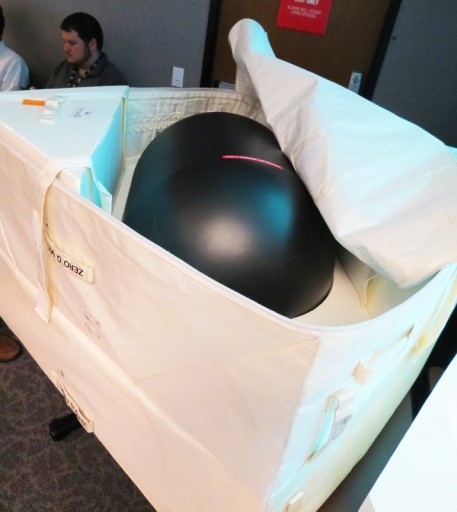
Dragon is delivering Nitrogen/Oxygen Recharge System (NORS) Recharge Tank Assemblies (RTA) to the Space Station marking the third flight of this new generation of gas resupply missions aboard Commercial Cargo Vehicles. In previous years, breathable air for ISS repressurizations was delivered by the European ATV and the Russian Progress. With ATV flying its final mission in 2014/15, future ISS repressurizations rely on Progress and NORS alone.
The NORS RTAs are designed to re-fill the station’s existing air supply network that used to be replenished by the US Space Shuttle. Pressurized gas from that system is used in the repressurization of the ambient atmosphere of ISS, to deliver Oxygen to the astronauts when the Station’s primary systems fail, operate the Quest airlock and pressurize the Station’s cooling systems.
Each of the NORS RTAs is about 90 centimeters long, 53cm in diameter and weighs 109 Kilograms, either carrying pressurized oxygen or nitrogen. Each tank is pressurized to over 400 bar, more than twice the pressure of previous tanks.
Overall, 37 tanks were expected to be manufactured to be sent to the station multiple times since the tanks are fully re-usable.
